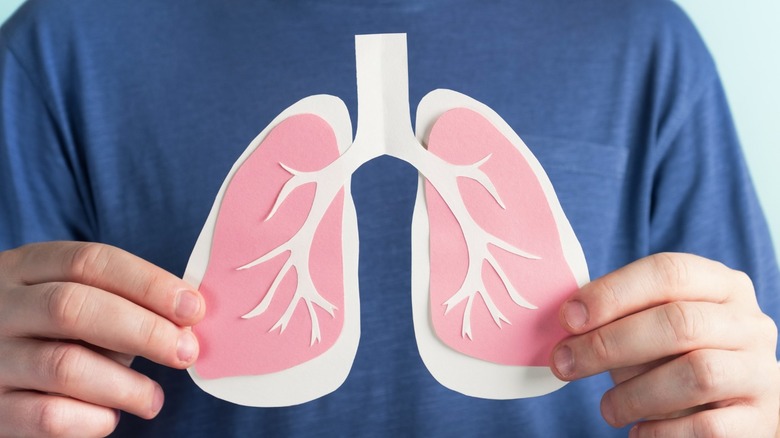A Surprising Link Between Tuberculosis And Cancer May Lead To Better TB Treatments
Results of a new Stanford University study indicate a link between tuberculosis (TB) infections and cancer cells that may hold promise for improved therapeutic approaches to TB in the future, according to Medical News Today.
The researchers had initially discovered that the clumps of white blood cells, also known as granulomas, that are typically found in the lungs of TB patients seemed to contain similar proteins to those that impair the body's immune response to cancer cells. The most recent study took a deeper dive into this apparent connection, examining actively infected human tissue samples of individuals from South Africa undergoing surgery for TB and tissue samples taken from post-mortem autopsies of Americans with fatal TB.
During the study, researchers confirmed two proteins in the granulomas called PD-L1 and IDO1, the same proteins found in certain kinds of cancerous tumors that also suppress the body's immune response. The experts at Medical News Today point out that this key finding could mean that similar methods to block the immune-suppressing proteins in cancer patients could be applied to individuals suffering from TB. The full results of the study appeared in the journal Nature Immunology.
While TB has decreased in recent decades, it is still a leading cause of death worldwide. According to the American Lung Association, one-third of the world's population is infected with TB and 1.5 million die annually of the disease.
TB symptoms
According to the experts at the Mayo Clinic, TB is a serious lung disease that can spread from person to person. The bacteria is transmissible in droplets that result from coughs and sneezes. Cases of TB increased in the United States in the mid-1980s during the height of the AIDS crisis, as those infected with HIV did not have the immunity to defend against the disease. While cases of TB have dropped off since then, health experts say TB remains a concern, as it is difficult to treat, and many strains are resistant to most medications.
There are two main categories of TB: Latent TB and Active TB. If you have Latent TB, you have the infection, but the bacteria are inactive, so it is not contagious and there are no symptoms. Those who have Active TB will manifest symptoms and can spread the disease to others. Symptoms of Active TB include coughing up blood or mucus, weight loss, night sweats, fever, and fatigue, among others. If you are experiencing these symptoms or you believe you have been exposed to TB, you should see your doctor. In addition, if you have been diagnosed with Latent TB, experts strongly advise you receive treatment, as it could evolve into Active TB.


